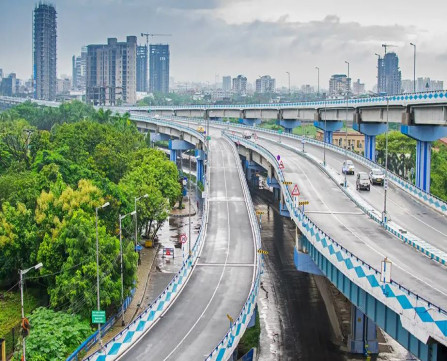In a major boost to Rajasthan’s road infrastructure, the National Highways Authority of India (NHAI) has taken over the construction of two significant greenfield expressway projects, the Jaipur–Pachpadra Expressway and the Bikaner–Kotputli Expressway. These ambitious projects are aimed at drastically improving connectivity across key economic zones in the state and accelerating the movement of goods and passengers in western and northern Rajasthan.
The Jaipur–Pachpadra Expressway, expected to span approximately 350 kilometers, will connect Jaipur to Pachpadra via Kishangarh, Ajmer, and Jodhpur. This route is not only strategically important for improving intra-state connectivity but also for linking to the Barmer district, home to the upcoming Pachpadra Refinery. With an estimated project cost of ?11,492 crore, this corridor is poised to become a vital economic artery in Rajasthan.
The Bikaner–Kotputli Expressway, estimated at ?10,839 crore, will extend nearly 295 kilometers, offering a direct, high-speed route between Bikaner and Kotputli. Once completed, it is expected to significantly reduce the travel distance by nearly 45 kilometers and bring down journey time from six hours to approximately three. This expressway will offer seamless connectivity to major cities in the National Capital Region (NCR), including Delhi, Gurugram, and Noida, while also linking to the Agra-Mathura industrial belt.
Both projects will be developed under the Hybrid Annuity Model (HAM), which combines the Engineering, Procurement, and Construction (EPC) and Build-Operate-Transfer (BOT) approaches. Under this model, the central government will bear up to 40 percent of the project cost during construction, while the private developers recover the remaining amount through annuity payments over time. This approach is designed to minimize financial risks while ensuring efficient delivery and long-term maintenance.
The projects were initially planned by the Rajasthan government as part of its broader “Vision 2047” infrastructure roadmap, which outlines the construction of nine greenfield expressways totaling over 2,700 kilometers. The central government’s decision to bring these two critical corridors under NHAI’s execution reflects their national importance and ensures adherence to expressway-grade standards in design and construction.
According to officials, preliminary work such as route alignment, surveys, and preparation of revised Detailed Project Reports (DPRs) is underway. For the Bikaner–Kotputli route, NHAI may either adopt the existing DPR prepared by the state authorities or commission a fresh one to align with national expressway guidelines. Additionally, necessary land acquisition processes will be initiated in coordination with district administrations to ensure timely execution.
Beyond faster mobility, the new expressways are expected to unlock a range of economic benefits. Local industries, agro-based businesses, and logistics operators will gain enhanced access to national markets, reducing transportation costs and improving supply chain efficiency. Towns and cities along these routes including Kishangarh, Ajmer, Jodhpur, Bikaner, and Kotputli are anticipated to witness rapid growth in commercial activity and employment opportunities.
Moreover, the expressways are designed to be environmentally efficient. With controlled access, minimal intersections, and better geometry, these greenfield highways will support higher speeds and reduced congestion, leading to lower emissions and fuel consumption. The integration of digital traffic management systems and provisions for EV infrastructure may also be considered as part of long-term planning.
In conclusion, the NHAI-led Jaipur–Pachpadra and Bikaner–Kotputli expressway projects represent a transformative moment in Rajasthan’s infrastructure journey. With enhanced federal support, robust execution models, and future-ready design, these corridors are expected to play a central role in shaping the state’s economic and logistical future over the next decade.
